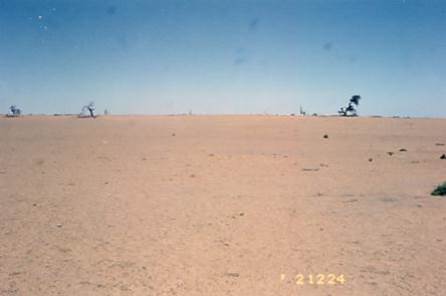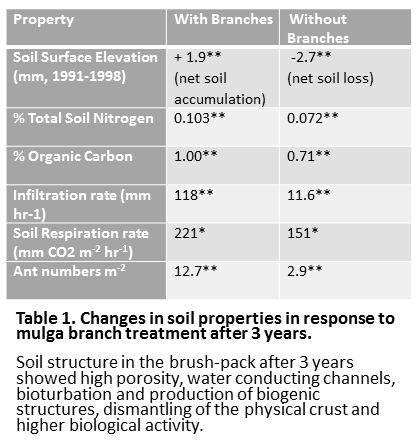Carole Bristow

Figure 1. The site in 2014, 5 years prior to works, showing the lack of wetland fringing vegetation due to it being regularly brushcut. (Photo Friends of Sherwood Arboretum)
Sherwood Arboretum, 15 hectares in size, contains a collection of planted (specimen) Queensland native trees under the supervision of Brisbane Botanic Gardens. Located in the suburb of Sherwood in Brisbane, the Arboretum has the Brisbane River as its western boundary and there are three small watercourses running both into and out of two lakes, providing habitat for wildlife. Before the development of the Arboretum in 1925, the lakes were a single paperbark swamp with small patches of open water. An early city water main ran across the swamp roughly dividing it in two. In 1975 the water main was covered by rocks and soil to form a causeway/walking path, and the swamp was reshaped to form two open lakes containing three islands. Many species of birds use the lakes, the watercourses, and the Arboretum as a whole, gathering and dispersing according to season or changes in management.
Prior to the commencement of regeneration treatments the edges of the lake were relatively barren (Fig 1), kept in this condition by regular mowing and brushcutting which led to occasional collapses of the edges into the lake. Close inspection found around 14 natives among the weeds being mowed and brushcut; so the idea came that perhaps the natives could be allowed to grow and protect the edge. This would also form a natural plant community and potential faunal habitat. Twenty weed species were observed, including Signal Grass (Brachiaria decumbens), Green Panic (Megathyrsus maximus var. pubiglumis), Bahia Grass (Paspalum notatum), Slender Pigeon Grass (Setaria parviflora), Blue Couch (Digitaria didactyla), Blue Billy Goat Weed (Ageratum houstonianium), Creeping Indigo (Indigofera spicata).
Works undertaken. In 2019, agreement was reached to discontinue mowing to the edge and brushcutting, and to trial bush regeneration-style weed management along a manageable portion of the lake edge; that is, both sides of the causeway. The work was carried out by two members of the Friends of Sherwood Arboretum bushcare group, a Habitat Brisbane bushcare group which is supported by Brisbane City Council. The two volunteers worked on a weekly basis over 4 years, gradually removing weeds to release native plants. The technique involved weed removal prior to weed seed shed while allowing natives to seed. The objective was to reduce weed soil seed banks and recharge native soil seed banks over time.

Figure 2. The north-west corner of the causeway in 2021 showing high density natives, particularly Willow Primrose. (Photo Gordon King)
Results to date. As weed cover declined markedly, natives increasingly reappeared, dominating the site within two years. At the peak of the site’s recovery, 34 native wetland herbaceous species had returned – many of these in high abundance in particular locations Figs 2-7). These particularly included Tassle Sedge (Carex facsicularis), Emu Foot (Cullen tenax), Narrrow-leaved Indigo (Indigofera linifolia), Common Rush (Juncus usitatus), Willow Primrose (Ludwigia octovalvis), Slender Knotweed (Persicaria decipiens), Spotted Knotweed (Persicaria strigosa) and Poison Pratia (Lobelia concolor).
Water birds that also graze on land have been observed by the regeneration team to be increasingly using the lake edges – including Purple Swamphen (Porphyrio melanotus), Wood Duck (Chenonetta jubata) (Fig 6), Dusky Moorhen (Gallinula tenebrosa) and Intermediate Egret (Ardea intermedia). The wetland plant insect life has also increased in the recovered areas. As a result, the Chequered Swallowtail Butterfly (Papilio demoleus) (Fig. 7) is now seen among the Emu Foot, one of its host plants.

Figure 3. General view with White Eclipta (Eclipta prostrata), Slender Knotweed, Willow Primrose, Commelina (Commelina sp.) and Azolla (Azolla sp.) (Photo Gordon King)

Figure 4. Emu Foot. One of the natives tenaciously surviving even when there was a heavy weed presence. (Insets are of the characteristic five leaflets and the inflorescence.) (Photos Gordon King.)

Figure 5. Diversity of native species is high in some places – such as pictured here where Willow Primrose, Common Reed, White Eclipta, Binung (Christella dentata), Sprawling Bluebell (Wahlenbergia gracilis) and Emu Foot occur in close proximity. The waterlily is the introduced Mexican Waterlily (Nymphaea mexicana) and is controlled from time to time. (Photo Gordon King)

Figure 7. Insect life has increased including the Chequered Swallowtail butterfly for which Emu Foot is a host plant. (Photo Gordon King)
Changes over time. Composition has proven to be seasonally variable. At one point when the water had reduced to a very low level in the lake, muddy edges appeared, and Bacopa (Bacopa monniera.) emerged and flowered. A few days later there was rain and the water rose and covered the flowering plants – which are unlikely to return until muddy edges reappear. More recently, with heavy rains in February 2022, floodwaters covered all the banks to a depth of over 1m for several days. Many species were severely affected, particularly Willow Primrose. However a good recovery of all species is occurring.
A notable result of the work has been that the lake edges are no longer eroding and it is clear that valuable new habitat has been created. These results provide more positive options for future management of the more extended lake edge should habitat restoration be undertaken in the future. It is an inspiring project to be involved in.
Acknowledgements: Brisbane Botanic Gardens and Brisbane City Council Habitat Brisbane program for agreeing to try this process. The Habitat Brisbane program also helped with occasional contractor support. Also thanks are extended to Gordon King, for his unflagging effort as fellow worker and for the use of his photographs.
Contact: Carole Bristow, bushcare leader, Friends of Sherwood Arboretum bristowc@bigpond.net.au






















































